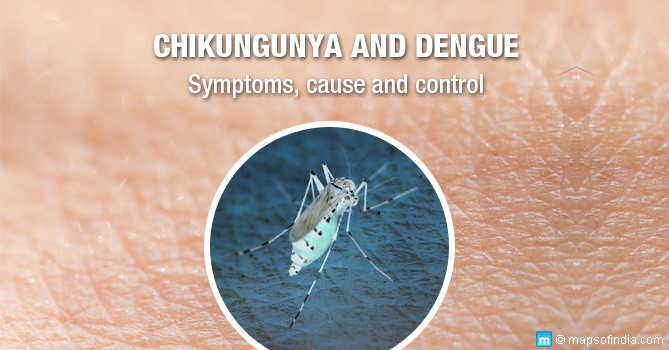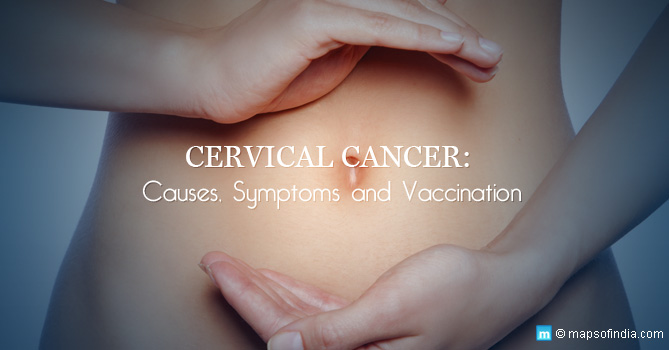The monsoon season in India brings with it cooling showers, a bumper harvest, and many festivals. For the people in the national capital, though, the rains have been bringing disease, misery, and fear for the past few years. Cases of Dengue and Chikungunya have once again been reported in large numbers from Delhi and surrounding areas. As of the week ending 3 September, 2016, the Delhi-NCR area recorded over 771 cases of dengue and 560 cases of Chikungunya. The number of new cases reported seems to go up considerably every week. The Delhi Municipal Corporation has confirmed 2 deaths due to Dengue, while news reports state that the toll may have reached 6 by now.
The capital region experienced one of its worst dengue outbreaks last year (2015) with the civic body confirming 15,867 dengue cases and the death toll reaching 60. In 2016, there has been a sharp increase in the number of Chikungunya cases compared to previous years – there were 18 cases reported in 2013, 8 cases in 2014, 64 in 2015 in Delhi-NCR. The high number of Chikungunya cases this year is certainly an unexpected occurrence since unlike Dengue, this disease is not endemic, that is, it is unlikely to show regular occurrence in any particular region.
According to medical experts, a new type 3 strain of Dengue is also doing the rounds in Delhi. This type, however, seems to have milder health implications and symptoms and most victims do not seem to require hospitalization.
What causes Dengue and Chikungunya?
Both Chikungunya and Dengue are caused by mosquito bite. The bite of the female Aedes aegypti mosquito is believed to be cause, but in some cases, the Aedes albopictus mosquito may also be the carrier. Medical experts believe that there are 5 different types viruses spread by these mosquitoes, any of which may cause the disease. Dengue is non-infectious, that is, it cannot be spread directly from a patient to another person. The Chikungunya virus is also carried by the same mosquito. Antibodies against the specific virus present in the blood may also help in detection and differentiation between the two.
Symptoms to look out for
Chikungunya –
Chikungunya may be asymptomatic in some patients, but in more than 72 percent patients it leaves lasting symptoms. The onset is characterised by high fever, persistent headache, conjunctivitis, and chronic fatigue. Following this phase, the fever subsides but fatigue and headache persist. Most patients suffer from pains and stiffness of the joints. This pain may persist for weeks and even months. A distinct rash and digestive problems may also be present during the onset of this disease.
Dengue –
Like Chikungunya, Dengue too presents with a high fever, severe headache, nausea, pains in the limbs, and reddish rashes. In a number of patients Dengue causes a hemorrhagic fever which results in precariously low blood platelets levels and leakage of blood plasma. Blood transfusion may be required in such cases. Dengue may also cause massive bleeding and result in death.
Clinical examination and blood tests may be required to differentiate between Chikungunya and Dengue in a patient. These tests can detect the specific virus in the patient’s blood.
What are municipal corporations doing?
In the battle against the outbreak of Dengue and Chikungunya, the three municipal corporations in Delhi are carrying out fumigation of areas that have reported the diseases. The civic bodies together have carried out fumigation in 13 percent households under their jurisdictions, a news report says. The efforts, however, are not quite enough, many believe. The slackness of the corporations has been a major let down, especially in light of last year’s disastrous dengue outbreak.
The three MCDs claim to be battling their own concerns. The South Delhi Municipal Corporation (SDMC), East Delhi Municipal Corporation (EDMC), and North Delhi Municipal Corporation (NDMC) together have reported about 1000 vacancies affecting their performance.
How can you prevent Dengue and Chikungunya
Prevention of Dengue and Chikungunya is the best precaution one may take against these diseases.
- Keep the house and neighbourhood clean. Use closed dustbins and garbage disposal systems.
- Do not let water stagnate in the neighbourhood. Mosquitoes breed in stagnant water and open water storages are breeding grounds. Clean out tanks and air coolers regularly.
- Use mosquito nets, and mosquito coils and repellents containing DEET.
- Allow fumigators to carry out their duties diligently. Report open garbage systems to the MCD.
What are your treatment options
It is best to contact a doctor or medical centre in case of high fever, headache, joint pains, and rashes during the monsoon season. Early detection of Dengue makes it easier to manage the disease.
Dengue fever does not have any specific treatment. Patients are put on a high fluid diet and acetaminophen is generally used to control fever and pain. Regular painkillers including ibuprofen and aspirin are avoided. In a number of cases, hospitalization becomes necessary to facilitate intravenous fluid and electrolyte replacement (due to dehydration caused by vomiting and fever).
Dengue patients also need regular blood pressure monitoring and blood transfusion in case of low blood platelet count. In case of Chikungunya, too, treatment involves high intake of fluids and lots of rest. In this case, however, acetaminophen and ibuprofen are regularly used to relieve the fever and joint pain.
Dengue is the more feared between the two diseases since it causes death in a number of victims each year, while Chikungunya, typically, has a very low mortality rate (1 in 1000). Despite regular recovery, Chikungunya patients suffer from joint pains for a long time, even years. Being affected by the Chikungunya virus, however, seems to leave the patient resistant to a subsequent infection, while in case of Dengue the victim may suffer a recurrence.
Only Delhi?
Delhi is not the only part of India affected by the outbreak of Dengue and Chikungunya this monsoon season. According to recent reports, West Bengal has reported over 5,639 cases of Dengue and 23 deaths due to the disease since January this year. Last month, over 510 new cases were reported on a single day. The disease has affected some 392 people in Assam, most of them being from the Kamrup (metro) area. Many districts of Maharashtra and Tamil Nadu have also reported an alarming Dengue outbreak this year.
Read More:
Jaundice – Causes, Symptoms, and Prevention
Communicable Diseases In India: Symptoms, Causes, prevention and Treatments
Health & Fitness Gadgets
Hepatitis B in India: Guidelines for Prevention, Symptoms, Causes, Risks & Treatment
Tobacco – The Leading Cause of Illnesses
How to Stay Healthy During Monsoons? Do’s and Don’ts
Non-Communicable Diseases – Take Care, Before It’s Late
Swine Flu: What You Need to Know and Do
Prevention of Heart Attack and Other Related Heart Diseases
Leprosy – Causes, preventions and eradication programme
Prevalence of Diabetes in India
The Fever : Vaccination Still An Elusive Proposal
Sharp rise in non polio Acute Flaccid Paralysis after polio-free status
Organ Donation in India






